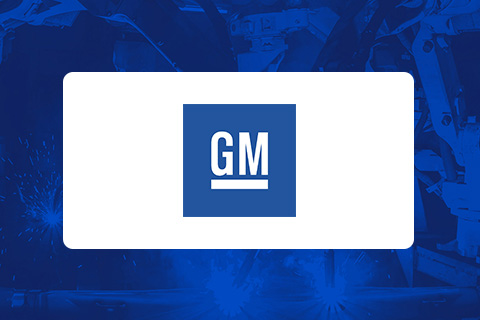Prove throughput, identify constraints, minimize downtime
Simul8 enables automotive manufacturers and suppliers to prove throughput, determine constraints and minimize downtime when designing or reconfiguring manufacturing lines or facilities.
Why use simulation for automotive production facilities planning?
When designing automotive production facilities, there is a huge amount of variation that needs to be considered including accommodating mixed vehicle models, component delivery times, equipment cycle times and operator shift patterns.
Simulation is a cost-effective tool for automotive manufacturers to test these variables and guarantee that production concepts will achieve maximum throughput at minimum cost.
How can simulation support automotive manufacturing design objectives?

Proving and achieving throughput
Proving throughput is a priority for assessing the overall efficiency and success of a production design concept.
In automotive plants, this is measured by the average number of vehicles produced per hour (Net Jobs per Hour).
Achieving the right balance of throughput is essential for manufacturers to maximize profitability; overproducing will waste resources and jeopardize budgets, while not meeting customer demand will impact earnings and market share.
Simulation is an essential tool for identifying, comparing and improving manufacturing design concepts to meet projected production targets on time and within budget.

Determining bottlenecks and constraints
Simul8 is a powerful tool for visually displaying where bottlenecks will occur in a production line design.
Removing bottlenecks and constraints is crucial for manufacturers as they limit production throughput, contribute to costly delays and impact on customer satisfaction.
Simulation is utilized by engineers to understand whether implementing protections (such as buffers or overspeed) and new layout ideas will eliminate bottlenecks, or if constraints will appear elsewhere in the process as a result.
Engineers often develop a roadmap of throughput improvement actions based on eliminating bottlenecks. This roadmap identifies current bottlenecks and prioritizes throughput improvement actions to remove the constraint.

Minimizing downtime effects
With an increasing reliance on state of the art machinery throughout the automotive production process, there is also a risk of equipment failure.
Breakdowns are usually captured with MTBF & MTTR (Mean Time Between Failures & Mean Time Between Repairs). An overall availability can be calculated by the equation: availability = MTBF/(MTB+MMTR). The design rate and availability are the two key factors for determining the overall line rate capability.
Line Rate Capability = Design Rate * Availability
Simul8 plays a vital role in understanding the effects of equipment failure throughout the production process, as well as the follow-on impact on overall throughput and earnings. Simulation can also be used to test the placement and value of contingency processes or machinery to alleviate the impact of downtime.

Setting optimal line rates
Simul8 is used to assess calculate cycle times and provides the functionality to understand the impact on performance when stochastic behaviors are added, including downtimes and changeovers.
Manufacturing facilities are usually designed and sized to meet customer demand. But how do engineers know where to start when it comes to designing the capability of a plant?
Takt time = Available working Time/ Customer Demand
Often, they will start with the takt time for a line or station. The takt time is a calculation for what is required to meet demand.
Learn about Simul8's powerful conveyor functionality
Designing optimal material handling systems
In the automotive manufacturing processes, there are a variety of material handling systems which aid the movement, protection and storage of sub-components. Often these tasks are completed through overhead conveyance systems such as Power & Free, Electric Monorail, and Power Friction.
Simul8 can be used to conducting ‘what if’ scenario testing on conveyor factors, including length of the delivery and return sides, speed of carriers, and the number of carriers within system.
Additional details such as dog-spacing, combining carriers as trains or limiting the number of carriers on certain sections can also be captured with the use of Simul8's powerful Visual Logic functionality.

Determining optimal placement of buffers and broadcast points in the system
Implementing an effective buffer strategy is a key objective during the design of the facility. Buffers include any area within the plant that holds, transports, and store parts. They are usually placed between lines to break-up the synchronous behavior amongst consecutive stations.
A broadcast point is a location within the plant where a vehicle identification code gets scanned. This information is then sent to a sub-component build location thereby creating a build schedule for the respective component.
There could be several points within the mainline where vehicle order may be interrupted. For example, repair areas and parallel lines are areas where vehicle can get out of their original sequence. Once an optimal broadcast point is determined within the mainline, vehicles should remain in sequence.
Simulation can be used to conduct ‘what-if’ analysis to seek out optimal placement for buffers and robust location points.
Find out how these Automotive organizations used Simul8 to seriously improve processes, eliminate bottlenecks and reduce costs
Learn more about Simul8
Explore the wealth of features that make Simul8 the #1 choice for simulation.
Learn more



